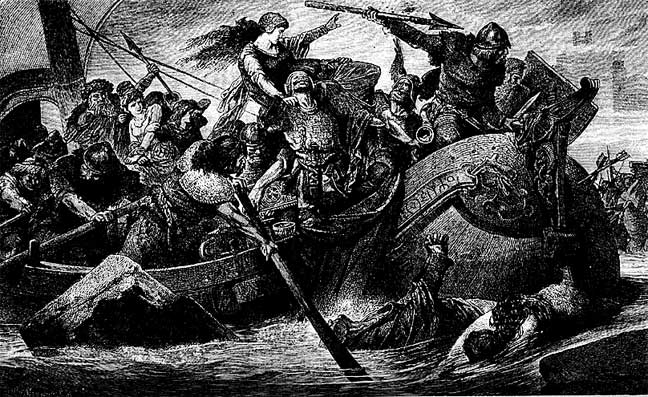

Southern European genes in Vikings may have actually made them brunette instead of classically blonde and blue-eyed. See also: An ancient Viking stone has revealed fears over a problem that still looms "This study changes the perception of who a Viking actually was - no one could have predicted these significant gene flows into Scandinavia from Southern Europe and Asia happened before and during the Viking Age."


"We have this image of well-connected Vikings mixing with each other, trading and going on raiding parties to fight Kings across Europe because this is what we see on television and read in books - but genetically we have shown for the first time that it wasn't that kind of world," explains Willerslev. When comparing the genetic material of these ancient samples with 3,855 present-day individuals from regions like the United Kingdom, Denmark, and Sweden, and data from 1,118 ancient individuals, they discovered more intermixing of genetic material than they'd originally imagined, lead author and director of The Lundbeck Foundation GeoGenetics Centre at the University of Copenhagen, Eske Willerslev, said in a statement. In the study, published Wednesday in the journal Nature, an international team of researchers reports findings from their six-year-long study of 442 human remains from burial sites that date back between the Bronze Age (2400 B.C.) to the Early Modern period (1600 A.D.) The authors also note that individuals not related to Vikings genetically, such as native Pictish people of Scotland and Ireland, sometimes received traditional Viking burials - suggesting that being a Viking was not so much about specific family roots but about a sense of internal identity. Sequencing the genomes of over 400 Viking men, women, and children from ancient burial sites, researchers found evidence of genetic influence from Southern Europe and Asia in Viking DNA dating back to before the Viking Age (750 - 1050 A.D.). In the largest genetic study of Viking DNA ever, scientists have found that Vikings - and their diaspora - are actually much more genetically diverse than we may have thought and were not necessarily all part of a homogenous background. While some of that may be true, a new genetic study of Viking DNA is flipping much of this history on its head. History books typically depict Vikings as blue-eyed, blonde-haired, burly men sailing the North Atlantic coast to pillage wherever they set foot on land.


 0 kommentar(er)
0 kommentar(er)
